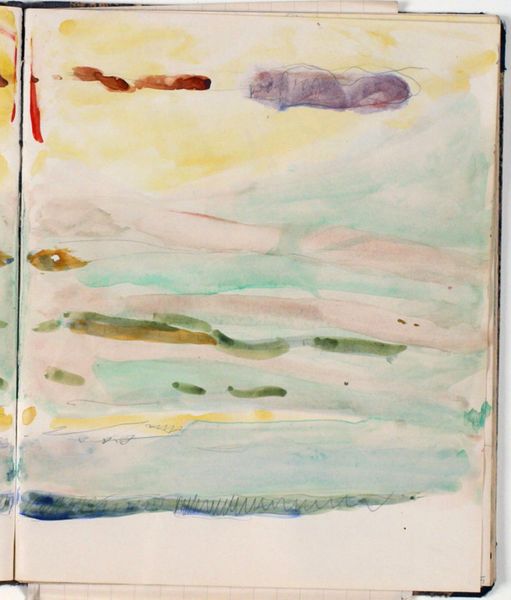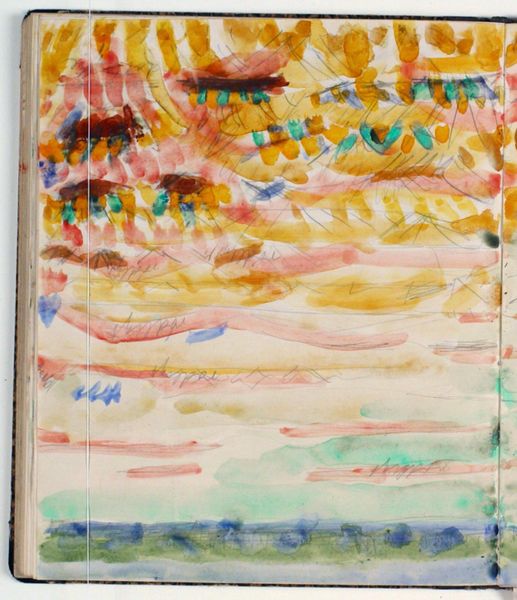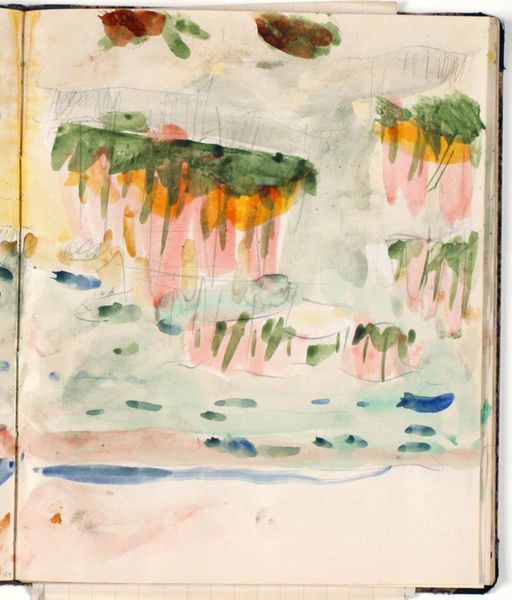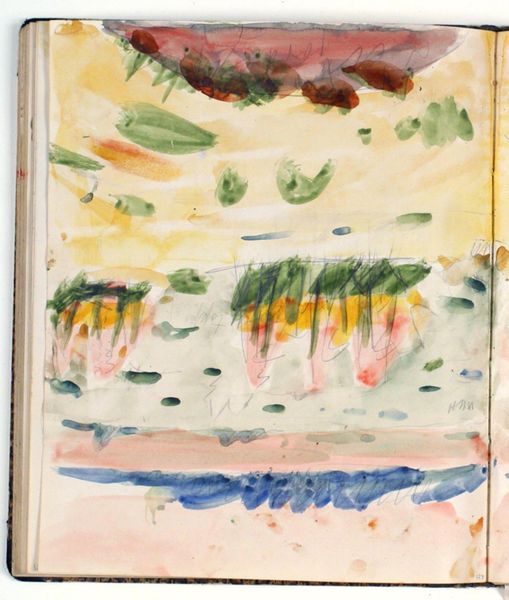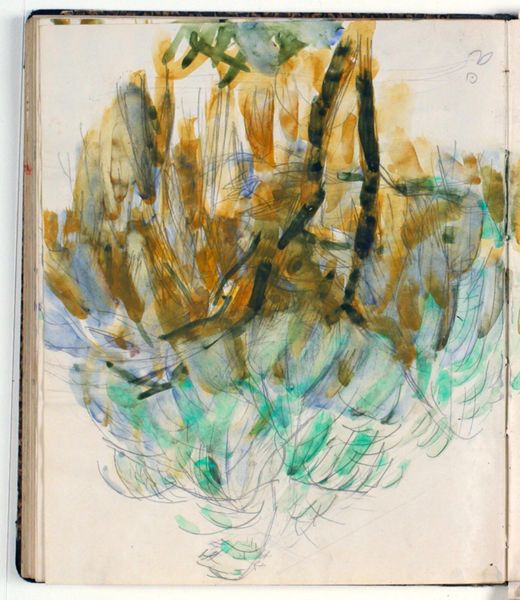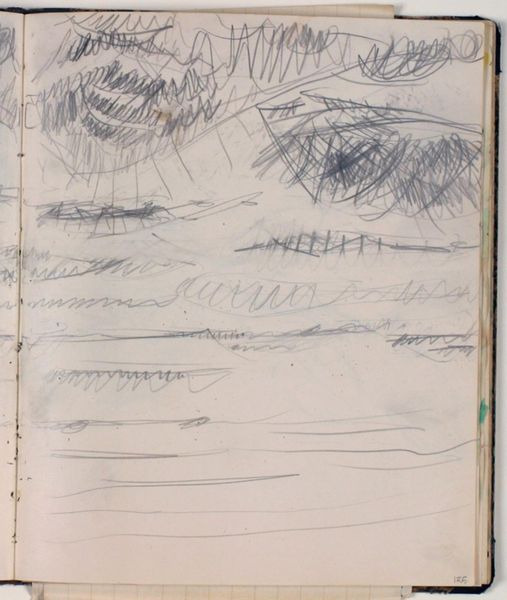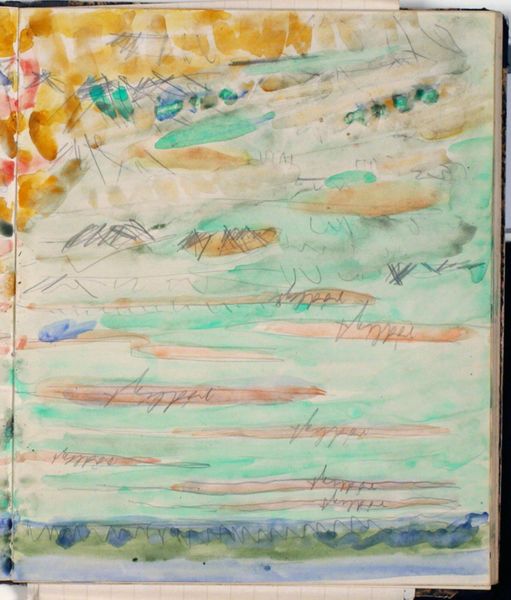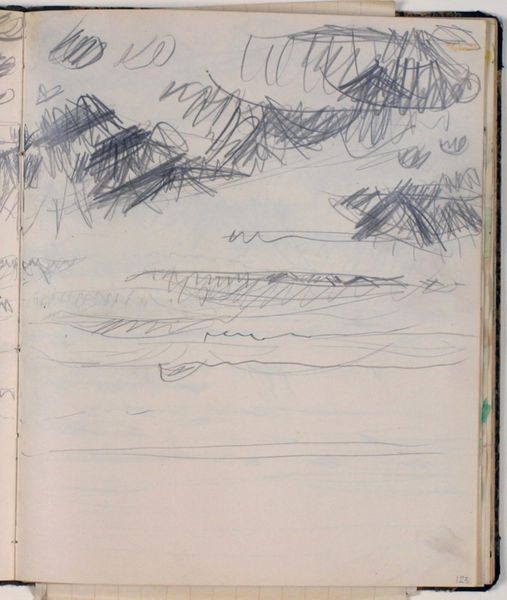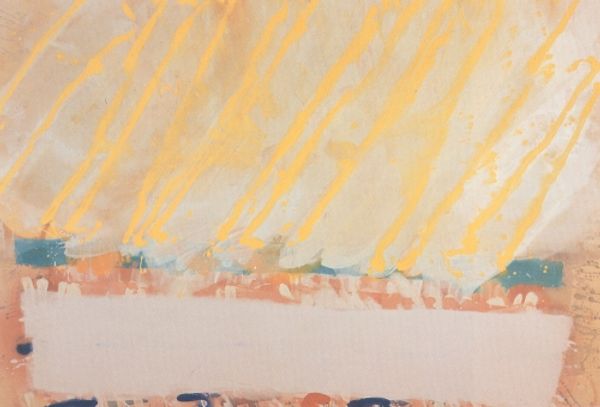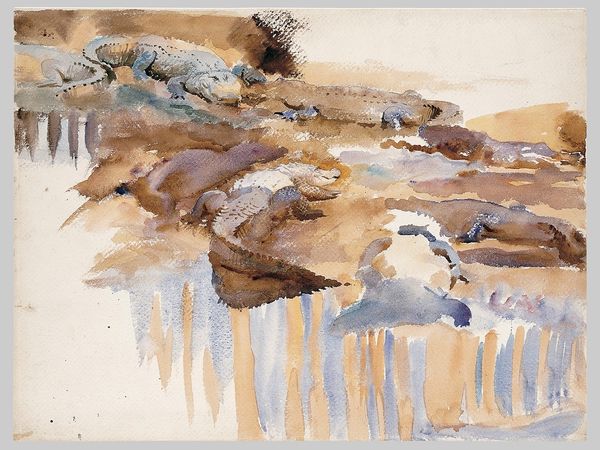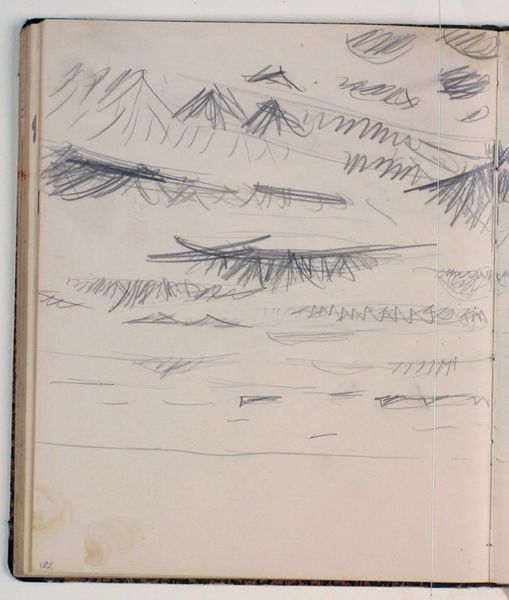
Dimensions: 226 mm (height) x 185 mm (width) x 112 mm (depth) (monteringsmaal), 221 mm (height) x 184 mm (width) (bladmaal)
Curator: So, here we have Niels Larsen Stevns’ “Landskabsstudie,” dating from 1930 to 1936. It's currently held at the SMK, Statens Museum for Kunst. The medium is listed as watercolor. Editor: Immediately, it strikes me as ephemeral. There's a lightness and fluidity, with colors bleeding into one another, that speaks of impermanence and a specific fleeting moment. Curator: That resonates with the context of its creation, doesn't it? Stevns, during this period, was actively exploring form through plein-air studies. We're seeing a move towards abstraction, a conscious deconstruction of landscape conventions. How does that idea of “deconstruction” play into your impression? Editor: The term 'deconstruction' certainly rings true, particularly when thinking about conventional depictions of landscapes. Stevns reduces the landscape to basic lines and shapes, allowing us to question what we perceive as ‘natural’ versus artistic construction. Also, its intimate scale, within a sketchbook, speaks to personal and perhaps subversive acts of documentation. Curator: Precisely. Think of the artistic movements that were forming at that time. The role of the artist was under discussion. And Stevns' move towards abstraction was participating in that debate by showing art's transformative role in visual representation. These weren’t necessarily meant for public consumption but as studies that engage and reshape one's own understanding. Editor: Yes, and if we examine this study through a feminist lens, we might consider its challenge to the traditionally masculine genre of landscape painting. Stevns offers us a fleeting, perhaps 'feminine' impression, devoid of the possessive gaze associated with idealized land ownership or national pride. Curator: It shifts the dynamic from grand narratives to intimate impressions. The museum holds pieces like this one as a method of analyzing art's role in visual politics, which enables broader cultural comprehension through representation. What does that spark for you? Editor: Thinking about contemporary engagements, I see potential to discuss our own interventions on environmental art through the ages. Where are we positioned in this long art conversation, and how much do social constructs shape how we create the reality that gets documented in museums? Curator: What a poignant direction. Considering social narratives, viewing landscape as social intervention – food for thought, indeed. Editor: Absolutely, art never happens in a vacuum, and taking this impressionist landscape, with its fluidity, as a basis is interesting.
Comments
No comments
Be the first to comment and join the conversation on the ultimate creative platform.
